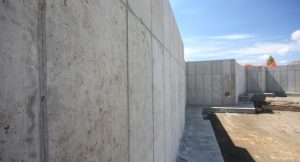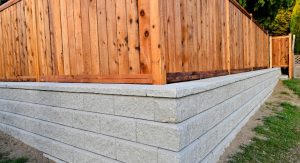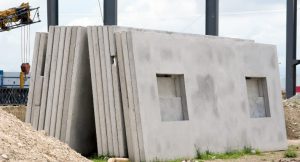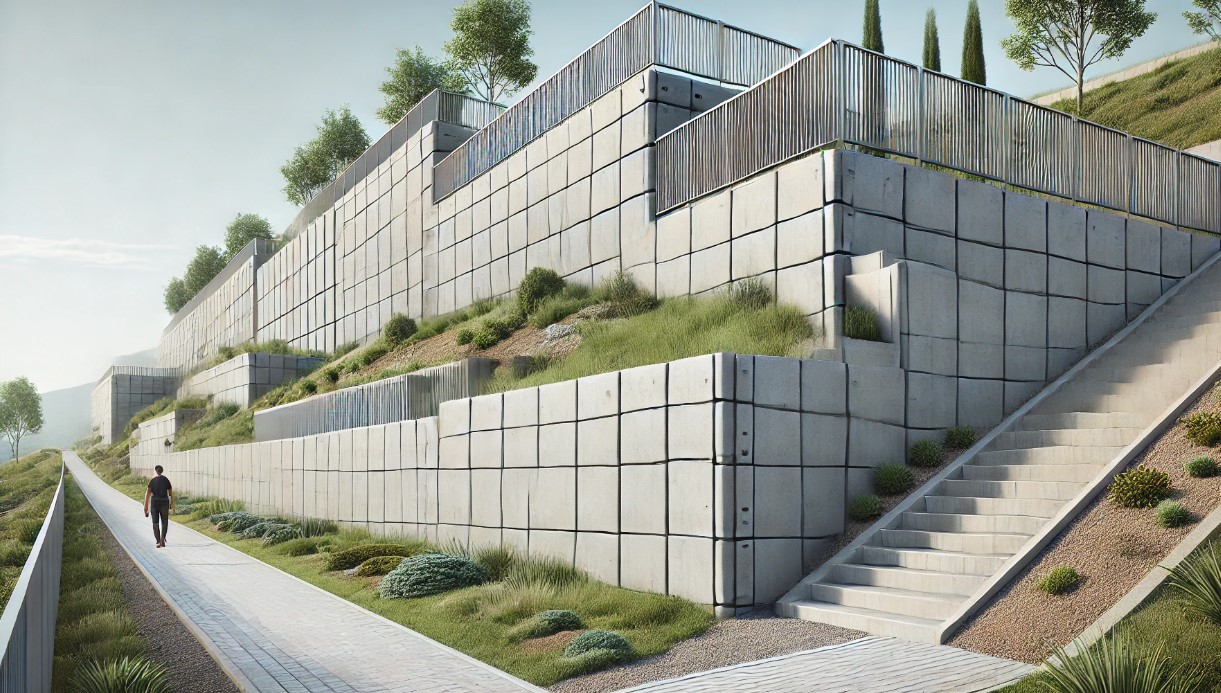Commercial developments, residential projects, and infrastructure improvements can all benefit from precast retaining walls.
Unlike traditional poured-in-place concrete walls, precast retaining walls arrive at your site ready for installation. They’re faster, more durable, and cost-effective. Let’s look at why they’re the preferred choice for many builders and engineers.
How Precast Retaining Walls Help Construction Project?
Speedy installation

A precast retaining wall allows for quicker and easier installation. The walls are manufactured off-site and arrive ready to be placed. Traditional poured-in-place concrete walls require more time for formwork, curing, and site preparation.
So you’re reducing time, meaning projects can be completed at shorter notice. Precast retaining walls allow for large sections to be installed at once, reducing your needs for on-site labour and machines.
These walls can be particularly useful for time-restricted projects, including roads, commercial developments, and emergency repairs. It has been possible to complete a project in less than two weeks.
Durability
Precast retaining walls are made from high-quality concrete and can withstand retaining soil and water, while resisting moisture, weathering, and freeze-thaw cycles.
They’re often reinforced with steel, which can enhance the structural integrity and ability to bear heavy loads. Precast concrete is more resistant to cracking, warping, and deterioration than traditional materials like timber and stone.
These walls better ensure the longevity of your structure, even in challenging conditions.
Versatility

Another interesting quality of these walls is their versatility in terms of design. A precast retaining wall can be produced in a range of shapes and sizes, meeting the particular demands of your project.
They fit a range of purposes, from earth bank retaining walls, storage buildings, concrete crash barriers, and bespoke packages. These walls can provide a smooth, modern look, or a more natural, stone-like appearance.
They meet a variety of engineering requirements and are suitable for gravity walls and reinforced retaining walls. Various projects including railways and hillsides in residential developments, and those preventing landslides, have used precast retaining walls.
Planet-friendly
Choosing these walls for your project can contribute to sustainable construction practices. These walls are manufactured off-site, so waste and energy consumption can be better controlled.
Precast facilities can recycle water and raw materials. They also minimise disruption on-site and the impact on your surrounding landscape is reduced, which is especially important in wetlands, parks, and urban developments.
These walls are sometimes integrated with eco-friendly systems like green wall systems, which support vegetation growth.
Safety
Precast retaining walls help enhance safety in multiple ways. The controlled environment allows for higher quality and consistency, reducing the risk of errors compared with on-site construction.
Because the walls are installed quickly, there’s less exposure to hazards like heavy machinery and poor weather conditions. This minimises the risk to workers. The strength of the precast concrete can reduce the likelihood of wall failure in the long-term.
Cost-effective

The upfront cost can be higher, but the cost-effectiveness of precast retaining walls is plain over time. The quick installation reduces labour costs, and the walls require less maintenance and repair.
The walls can be better customised which can reduce material waste and mean lower transportation costs. Since they’re manufactured away from your site, there’s less disruption, fewer delays due to weather, and less need for equipment, helping to keep your project on budget.
Conclusion
Precast retaining walls offer several benefits that make them suitable for a range of projects. The speed of installation, durability, versatility, environmental benefits, safety, and cost-effectiveness make them a popular choice.
Whether you’re building roads or a storage building, managing a commercial landscape, or retaining an embankment, a precast retaining wall can meet the requirements. These walls offer a reliable, practical, and high-performing solution to a wide range of construction projects.




